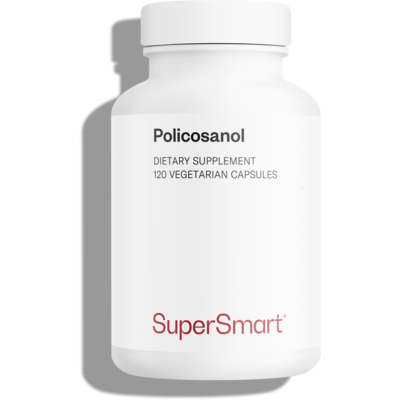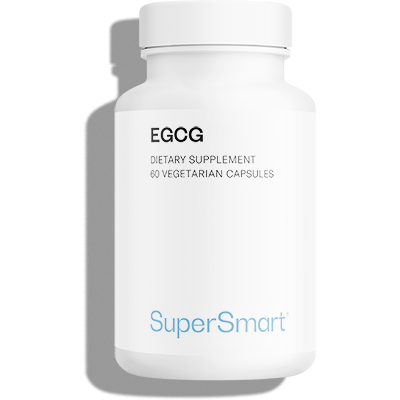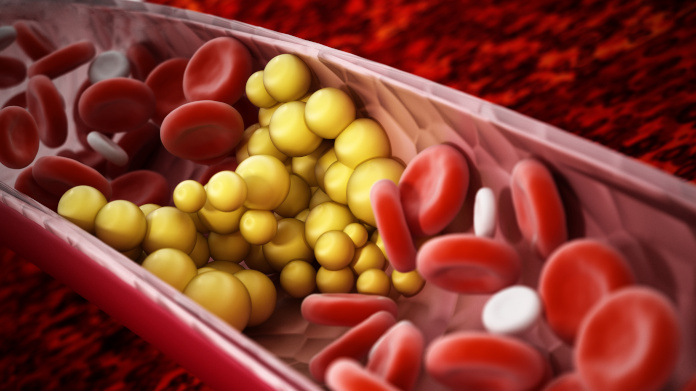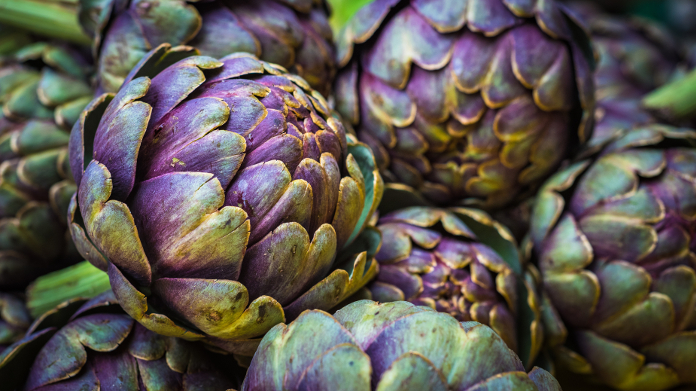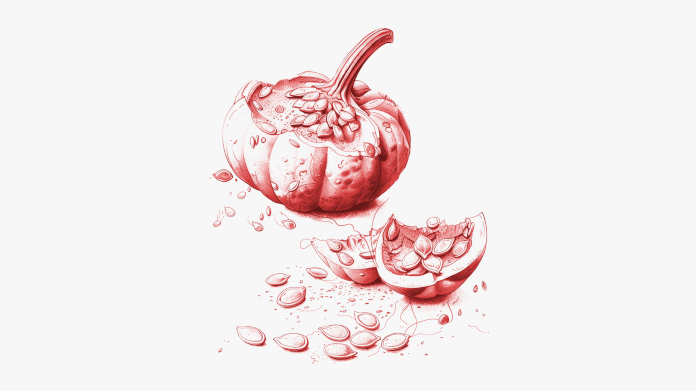The 3 best anti-cholesterol plants
Want to reduce your cholesterol naturally? Discover the 3 most effective plants for reducing ‘bad’ LDL-cholesterol and supporting your cardiovascular health.

Definition and role of cholesterol, a lipid essential to health
Cholesterol is a lipid (a type of blood fat) from the sterol family, which the body needs to function properly and which it produces itself.
Cholesterol is a component of cell membranes and enables the body to produce vitamin D, certain hormones (progesterone, testosterone, cortisol), etc.
Good and bad cholesterol (HDL and LDL)?
Primarily made in the liver, cholesterol is transported throughout the body by LDL: low-density lipoproteins. Once organ cells have used the cholesterol they need, the ‘spent’ molecules, plus any excess cholesterol, are carried back to the liver for recycling or elimination by HDL: high-density lipoproteins (1).
Strictly speaking then, there is no good or bad cholesterol. However, doctors have identified that an excess of LDL implies an excess of circulating cholesterol, which eventually creates deposits, clogging the arteries and reducing their elasticity (this is referred to as atherosclerosis).
High LDL-cholesterol levels and the presence of atherosclerosis are risk factors for cardiovascular disease, including heart attacks (2).
Conversely, studies suggest that high HDL levels encourage cholesterol to be transported from the blood towards the liver, while also having anti-inflammatory properties. HDL is therefore considered beneficial to health (3).
Natural approaches to lowering LDL-cholesterol levels
If you’re worried about your cholesterol, consult a health professional who will be able to give you an accurate assessment, and if necessary, advise on suitable medication (statins for example).
In addition, there are several natural options available for tackling high LDL-cholesterol:
- adopt a low-cholesterol diet (reduce your consumption of animal (predominantly land animal) fats: butter, cheese, cold/cured meats, beef, etc.);
- maintain a healthy weight in general;
- reduce your alcohol intake;
- take regular exercise;
- reduce your stress levels;
- make use of anti-cholesterol plants. Here again, consult your doctor first, especially if you are already taking medication.
The 3 most effective anti-cholesterol plants
Black garlic: a concentrate of S-allyl-cysteine for fighting cholesterol
Containing a number of active ingredients, garlic is a natural remedy for numerous ailments, hence its age-old use in many traditional pharmacopoeia (4).
Garlic is especially rich in organosulfur compounds such as alliin, which is converted by an enzyme into allicin when garlic is crushed or chopped. It’s allicin that gives garlic its distinctive smell. S-allyl-cysteine is formed from allicin and is the subject of extensive scientific research.
It is these various compounds or their by-products which are responsible for garlic’s ability to reduce cholesterol levels by inhibiting cholesterol production in the liver and improving the elimination of lipids (5-10).
In addition, this traditional flavoring ingredient contains saponins which also contribute to its cholesterol-lowering benefits and cardio-protective effects.
Produced by fermenting white garlic at a high temperature, black garlic has an even higher content of S-allyl-cysteine: it is a real SAC concentrate. Black garlic therefore represents an excellent anti-cholesterol plant (you can obtain its benefits by taking Organic ABG10+®, an organic black garlic supplement standardized to 0.1% S-allyl-cysteine).
EGCG in green tea to reduce the absorption of cholesterol
Green tea also helps to lower LDL-cholesterol as a result of its powerful antioxidants which work by reducing the absorption of cholesterol in the gut (12).
These antioxidant compounds include, in particular, epigallocatechin gallate or EGCG.
Drinking green tea or taking green tea supplements on a regular basis thus helps to support cardiovascular health (an excellent option is EGCG, which provides at least 455mg EGCG a day).
Sugar cane with policosanol, another excellent anti-cholesterol plant
Highlighted by Cuban doctors in the 1990s, policosanol is a mixture of aliphatic alcohols usually isolated from the wax of sugar cane (13).
Policosanol appears to reduce the production of HMG-CoA reductase, an enzyme that plays a key role in the production of cholesterol by the liver. It acts in a different way to statins, which simply block the enzyme’s activity once formed.
Widely-studied, policosanol was the subject of a meta-analysis which concluded that at doses of 10mg-20mg a day, it reduces levels of both total cholesterol (by between 17% and 21%), and ‘bad’ LDL-cholesterol (by between 21% and 29%), while increasing those of ‘good’ HDL-cholesterol (by between 8% and 15 %) (14).
The authors suggest that daily supplementation with policosanol may be as effective at reducing total and LDL-cholesterol as the same dose of statins which, provided other studies confirm these benefits, would make sugar cane an effective plant for lowering cholesterol.
That’s why sugar cane extract is available in anti-cholesterol supplements (such as Policosanol).
SuperSmart ADVICE
References
- https://www.inserm.fr/c-est-quoi/docteur-hdl-et-mister-ldl-cest-quoi-le-bon-cholesterol/
- HIRAYAMA, Satoshi et MIIDA, Takashi. Small dense LDL: an emerging risk factor for cardiovascular disease. Clinica Chimica Acta, 2012, vol. 414, p. 215-224.
- BARTER, Philip J., NICHOLLS, Stephen, RYE, Kerry-Anne, et al.Antiinflammatory properties of HDL. Circulation research, 2004, vol. 95, no 8, p. 764-772.
- LAWSON, Larry D. et GARDNER, Christopher D. Composition, stability, and bioavailability of garlic products used in a clinical trial. Journal of agricultural and food chemistry, 2005, vol. 53, no 16, p. 6254-6261.
- CERELLA, Claudia, DICATO, Mario, JACOB, Claus, et al.Chemical properties and mechanisms determining the anti-cancer action of garlic-derived organic sulfur compounds. Anti-Cancer Agents in Medicinal Chemistry (Formerly Current Medicinal Chemistry-Anti-Cancer Agents), 2011, vol. 11, no 3, p. 267-271.
- ARIGA, Toyohiko et SEKI, Taiichiro. Antithrombotic and anticancer effects of garlic‐derived sulfur compounds: A review. Biofactors, 2006, vol. 26, no 2, p. 93-103.
- LEE, Da Yeon, LI, Hua, LIM, Hyo Jin, et al.Anti-inflammatory activity of sulfur-containing compounds from garlic. Journal of medicinal food, 2012, vol. 15, no 11, p. 992-999.
- KIM, Sun Min, KUBOTA, Kikue, et KOBAYASHI, Akio. Antioxidative activity of sulfur-containing flavor compounds in garlic. Bioscience, biotechnology, and biochemistry, 1997, vol. 61, no 9, p. 1482-1485.
- SHEELA, C. G. et AUGUSTI, K. T. Antiperoxide effects of S-allyl cysteine sulphoxide isolated from Allium sativum Linn and gugulipid in cholesterol diet fed rats. Indian Journal of Experimental Biology, 1995, vol. 33, no 5, p. 337-341.
- SHEELA, C. G. et AUGUSTI, K. T. Effects of S-allyl cysteine sulfoxide isolated from Allium sativum Linn and gugulipid on some enzymes and fecal excretions of bile acids and sterols in cholesterol fed rats. Indian journal of experimental biology, 1995, vol. 33, no 10, p. 749-751.
- DENG, Ruitang. Therapeutic effects of guggul and its constituent guggulsterone: cardiovascular benefits. Cardiovascular drug reviews, 2007, vol. 25, no 4, p. 375-390.
- Zheng XX, Xu YL, Li SH, Liu XX, Hui R, Huang XH. Green tea intake lowers fasting serum total and LDL cholesterol in adults: a meta-analysis of 14 randomized controlled trials. Am J Clin Nutr. 2011 Aug;94(2):601-10. doi: 10.3945/ajcn.110.010926. Epub 2011 Jun 29. PMID: 21715508.
- JANIKULA, Mark. Policosanol: a new treatment for cardiovascular disease?(Policosanol). Alternative Medicine Review, 2002, vol. 7, no 3, p. 203-218.
- GOUNI-BERTHOLD, Ioanna et BERTHOLD, Heiner K. Policosanol: clinical pharmacology and therapeutic significance of a new lipid-lowering agent. American heart journal, 2002, vol. 143, no 2, p. 356-365.
Keywords
12 Days
A Product worth waiting for when not…
A Product worth waiting for when not available and then arriving as a surprise!
DOMINIC
14 Days
On time shipping
On time shipping
GEORGE Verne
15 Days
Ordering was easy and the product was…
Ordering was easy and the product was delivered with no problems. Appreciated that I was notified when it would arrive. Thanks!
MascarC
21 Days
Great customer service - responsive …
I ordered from them and my item was unavailable for sometime. I was super happy when they reactivated my order and shipped my item which arrived very quickly. Great customer service.
Ruth Rueter
22 Days
Super fast shipping
Super fast shipping
Donald Borling
25 Days
Reputable companysearch and the number of…
The research and the number of selection of products.
NAKHJAVAN Shervin
38 Days
The Anti Aromatase is a great product
The Anti Aromatase is a great product. You just need to have constant inventory. Recently this product has been out of stock.
GEORGE Verne
40 Days
Great help on chat
Great help on chat. Knowledgeable and friendly.
Jason Argos
43 Days
Customer service was fast and friendly.
Customer service helped to stop the transaction process of the subscription. I appreciated that.
Greenie
43 Days
I order here due to the high quality of…
I order here due to the high quality of the products and the quick delivery of items - thank you
Barbara J
45 Days
SuperSmart's Eye Pressure supplements: highly recommended!
I purchase SuperSmart's Eye Pressure supplements regularly for over 5 years, and gotta say they are truly a wonderful product for my Glaucoma. Highly recommended if you have eye pain from your Glaucoma.
D. Martinez
49 Days
Quick service
Quick service
MONELL
50 Days
Speedy service.
Speedy service.
ROSENTHAL Marvin
54 Days
Clear website- Efficient
Clear website. Excellent search engine and fast delivery!
Mohamad Hussein
56 Days
They have great products.
They have great products.
Vickie

